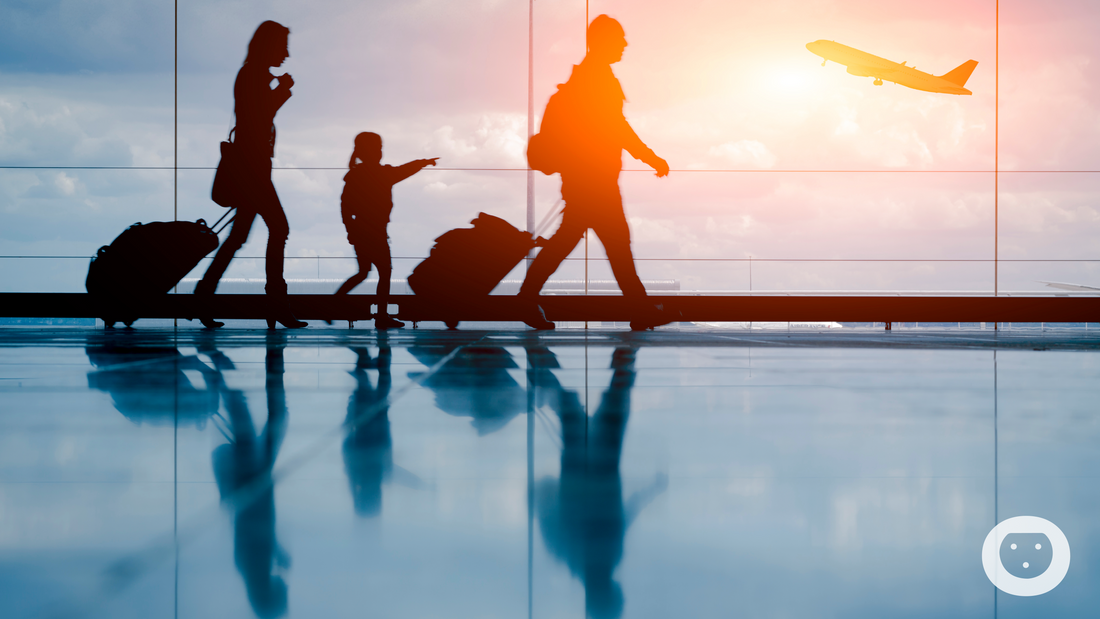Traveling with kids is an adventure that can create lasting memories, but it also comes with unique challenges, especially when it comes to safety. New environments like hotel rooms, rental properties, or family members’ homes may not be as childproofed as your own. Fortunately, with some planning and a few practical tips, you can ensure a safe and stress-free trip for the whole family.
Here’s how to childproof on the go and keep your little ones safe wherever your travels take you.
Pack a Portable Childproofing Kit
A travel-friendly childproofing kit can help you quickly adapt to any environment.
What to Include:
- Outlet covers to block exposed electrical outlets.
- Cord wraps to secure dangling cables and reduce tripping hazards.
- Cabinet locks for drawers and cupboards that may contain hazardous items.
- Door knob covers to prevent toddlers from wandering into unsafe areas.
- Adhesive corner guards for sharp table edges or low furniture.
Pro Tip:
Consider reusable, non-damaging options like removable adhesive locks and silicone corner guards for easy setup and takedown.
Inspect and Adapt Your Temporary Space
When you arrive at your destination, take a few minutes to assess the space from your child’s perspective.
What to Look For:
- Electrical Hazards: Check for accessible outlets and exposed cords.
- Furniture Stability: Ensure that heavy furniture like dressers or TVs are stable and unlikely to tip over.
- Small Objects: Remove small items, like coins or batteries, that may pose choking hazards.
- Hazardous Items: Identify and relocate breakable or sharp items, as well as cleaning supplies, medications, or other harmful substances.
Manage Sleep Space Safety
Whether you’re using a hotel crib or co-sleeping in a new environment, it’s essential to create a safe sleep setup for your child.
Tips for Safe Sleep:
- Use your own travel crib or pack-and-play to ensure it meets safety standards.
- Avoid using soft bedding, pillows, or toys in the sleep area to reduce the risk of suffocation.
- Keep the crib or bed away from cords, outlets, and furniture that could be climbed on.
Childproof During Transit
Safety isn’t just about the destination—protecting your kids during travel is equally important.
Car Travel:
- Use a properly installed car seat that is appropriate for your child’s age, weight, and height.
- Keep small toys or snacks within reach but avoid choking hazards.
- Secure loose items to prevent them from becoming projectiles during sudden stops.
Air Travel:
- Pack outlet covers and use them in airport lounges or on planes equipped with electrical outlets.
- Bring small, quiet activities to keep your child entertained and prevent wandering.
Create Safe Play Areas
Children need space to play, even while traveling, but unfamiliar environments may not always be safe.
Tips:
- Use a travel play mat or portable gate to create a contained play area.
- Check for hazards like loose carpets, uneven flooring, or small objects before allowing your child to roam.
- Bring safe, familiar toys to keep them engaged in a secure space.
Teach Your Kids Simple Safety Rules
Even young children can learn basic safety habits to follow while traveling.
Lessons to Teach:
- Always stay close to parents or caregivers in public spaces.
- Avoid touching electrical outlets, cords, or unfamiliar devices.
- Ask for permission before opening doors or exploring new areas.
Choose Family-Friendly Accommodations
Opt for hotels, rentals, or family stays that prioritize child safety.
What to Look For:
- Properties that advertise childproof features, such as outlet covers or crib availability.
- Spacious layouts that allow for easy supervision.
- Hosts who are willing to accommodate special safety requests.
Prepare for Emergencies
Even with careful planning, emergencies can happen. Being prepared can make all the difference.
Emergency Readiness:
- Know the local emergency numbers and nearest medical facilities.
- Pack a first-aid kit with essentials like bandages, antiseptic wipes, and child-safe medications.
- Keep a list of your child’s allergies, medical information, and emergency contacts readily accessible.
Conclusion
Traveling with kids doesn’t have to be stressful if you prioritize safety and plan ahead. By packing a portable childproofing kit, inspecting your temporary space, and teaching your children basic safety rules, you can enjoy a memorable and worry-free trip with your family.

